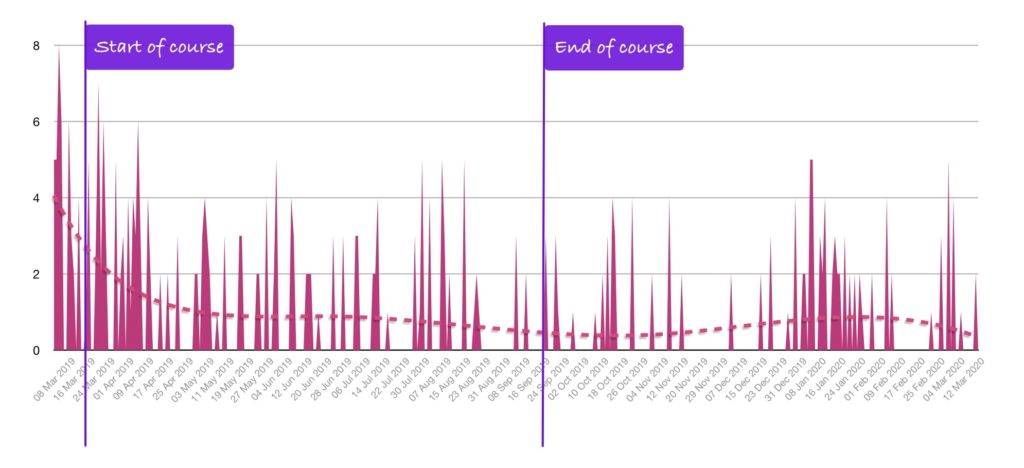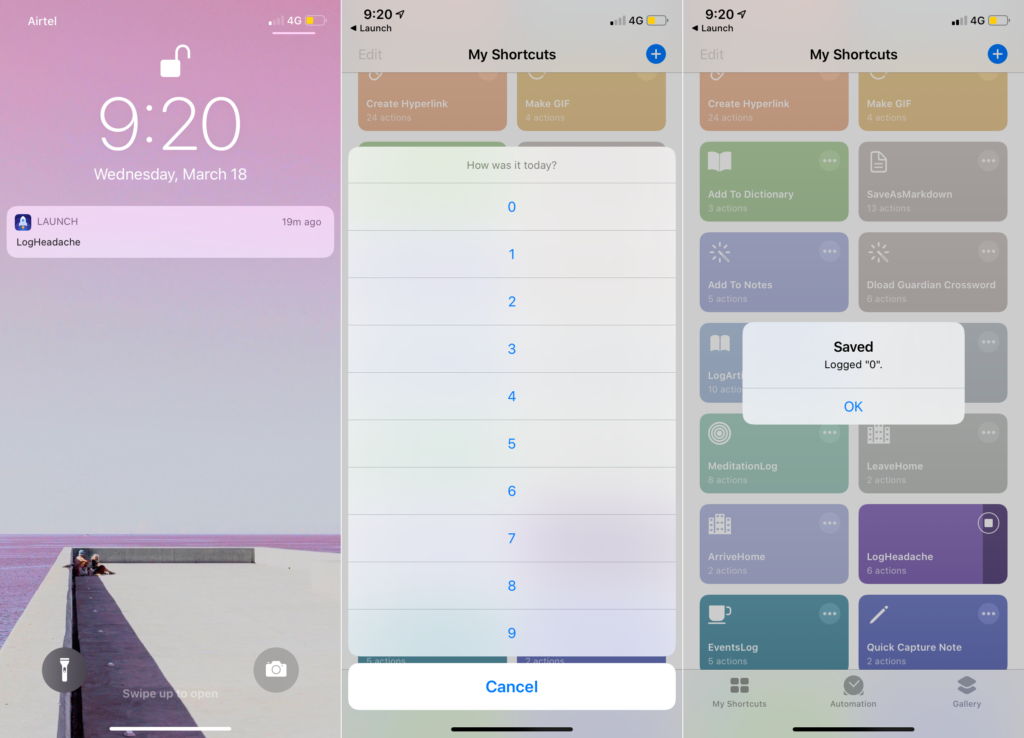In March 2019, I was prescribed a 6-month course of pills for a migraine problem that had begun to significantly affect the quality of my life. For the previous 6 months, I had had a migraine 9 days out of every two weeks. 5 of them were severe enough to warrant winding up a working day, driving home and somehow sleeping it off – essentially, half of my working days. I had gone through an identical, though shorter regimen in 2012.
This time I wanted to see how fast the course would act and how long-lasting its effect would be. So I created an exceedingly simple iOS Shortcut that took input from me on my pain level on a scale of 1 to 10 and log it to a pipe-separated plaintext file in iCloud Drive. I automated that with Launch Center Pro (before iOS 13 introduced Shortcuts automation) to notify me at 9pm each night. This is tonight:
It’s been a little over a year since I began tracking data. Unfortunately, there isn’t a lot of baseline data because I began tracking pain levels just a week or so before starting the pills. But here it is, visualised:

Data begins 8th March 2019. I began the regimen on 14th March 2019. I ended it in mid-September, although I don’t remember the exact date.
You can see how both the intensity and frequency reduces significantly in the first month itself, and then settles down to a much less severe level. January 2020 was a weird, bad month but it didn’t hold a candle to the January a year ago. I can live with this level of chronic pain pretty easily.
The regimen was simple – two pills a day tapering down to one a day. The Shortcut and scheduling is trivial. The data is also unidimensional – doesn’t capture potential migraine triggers – food, light, sound, stress. But the data exists. Is in an open format. And can be charted. And that by itself gave me a sense of control during and after the course.
I plan to continue charting the data and make it richer by capturing more contextual data – triggers being the first. Maybe we’ll revisit this post a year, three years later. And maybe this long-term data set will be useful for treating the next bout of severe migraines even better.

